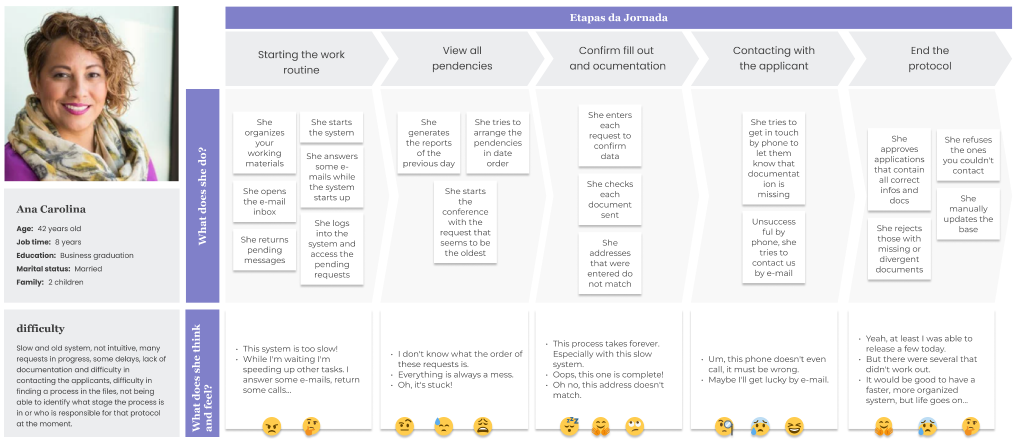Role: Project Lead, Product Designer, Design system
Current scenario – Brazil
In 2020, the global pandemic forced Brazil and other countries to adopt lockdown measures to contain the spread of the virus. As a result, many public services were interrupted due to the lack of support to carry out these services online. The digitization of these services, which was already underway, became even more critical to ensure the efficiency and quality of services provided to citizens.
Objective
Digitize the services and assistance of public agencies, aiming to optimize and speed up the release of permits and licenses for companies and individuals. With this, we aimed to improve the efficiency of the process and make access to services easier and more accessible for all users.
How
For the public service digitalization project, we assembled a multidisciplinary team composed of a Product Owner, a Requirements Analyst, a Technical Leader, a Project Manager, and myself, as a Product Designer. We started our work by holding meetings with users indicated by the public management to understand their needs, flows, impact points, and delays in the process, as well as opportunities for improvements.
Development
Based on the knowledge extracted from these meetings, I unified the empathy map, user journey, and persona into a single document. This document was presented to the larger group to confirm our assumptions and ensure that the solution we were creating met the needs of users and was effective in the process of digitizing public services.

After the presentation, we discussed some points of improvement.

Workflow
In partnership with the team indicated by the client, we held meetings to detail all the stages of the existing process and identify opportunities for improvements. Due to the large number of processes and people involved, this was an extremely complex challenge.
However, we used our skills and knowledge in product design to carefully map out all the steps and identify areas of inefficiency and opportunities for automation and digitization. From this information, we created a detailed workflow that made the process more agile, efficient, and user-friendly for end-users.

Requirements Analysis
In partnership with the requirements analysis team, we started detailing the system, mapping all its processes and business rules in detailed documents. In total, 6 modules were created, including:
- User Registration
- Institution Parameterization
- Process Parameterization
- Process Management
- Opening of processes
- Notifications
In addition, we developed some complementary documents, such as standards for documents generated by the system.
I appreciate this development phase very much because this is the moment when I can discuss possibilities with the team and contribute to designing a solution that meets users’ needs and is efficient and easy to use.

Design System
Based on the detailed workflow and with the final requirements documents, I started developing the design system using the Atomic Design methodology.

Prototyping
I prototyped some screens in medium fidelity and presented the MVP to the client after joint evaluation with the project team. The client suggested some adjustments focusing on the users’ learning curve, taking into account the other systems that had already been in use for some time, and I created high-fidelity prototypes.
Hand-off
During the Hand-off process, I presented the prototype to the development team and we discussed the functionalities, workflows, and expectations of the project. Even though they had been involved in the project from the beginning, many questions arose, as it is a quite complex system. To ensure that everyone was aligned, we met online to go through each stage of the system and clarify any doubts. In addition, we met every sprint to review the functions that would be worked on that week and keep the communication channel open to clarify any doubts that arose.

Result
The sis.integra aims to promote improvements in four fundamental pillars:
- Reduction of manual tasks: with sis.integra, a reduction in manual activities such as form filling and document scanning is expected, which will save time and avoid possible errors.
- Simplification of workflows: by eliminating redundant or unnecessary steps, a reduction in response time and the streamlining of each process is expected, making workflows simple and more efficient.
- Automation of approvals and authorizations: sis.integra seeks to automate processes that were previously done manually, making approvals and authorizations faster and more efficient.
- Improvement in communication: with the aim of facilitating communication between users and government entities, as well as between different government agencies, sis.integra aims to reduce bureaucracy and delays caused by inefficient communication, resulting in time savings for all parties involved.
